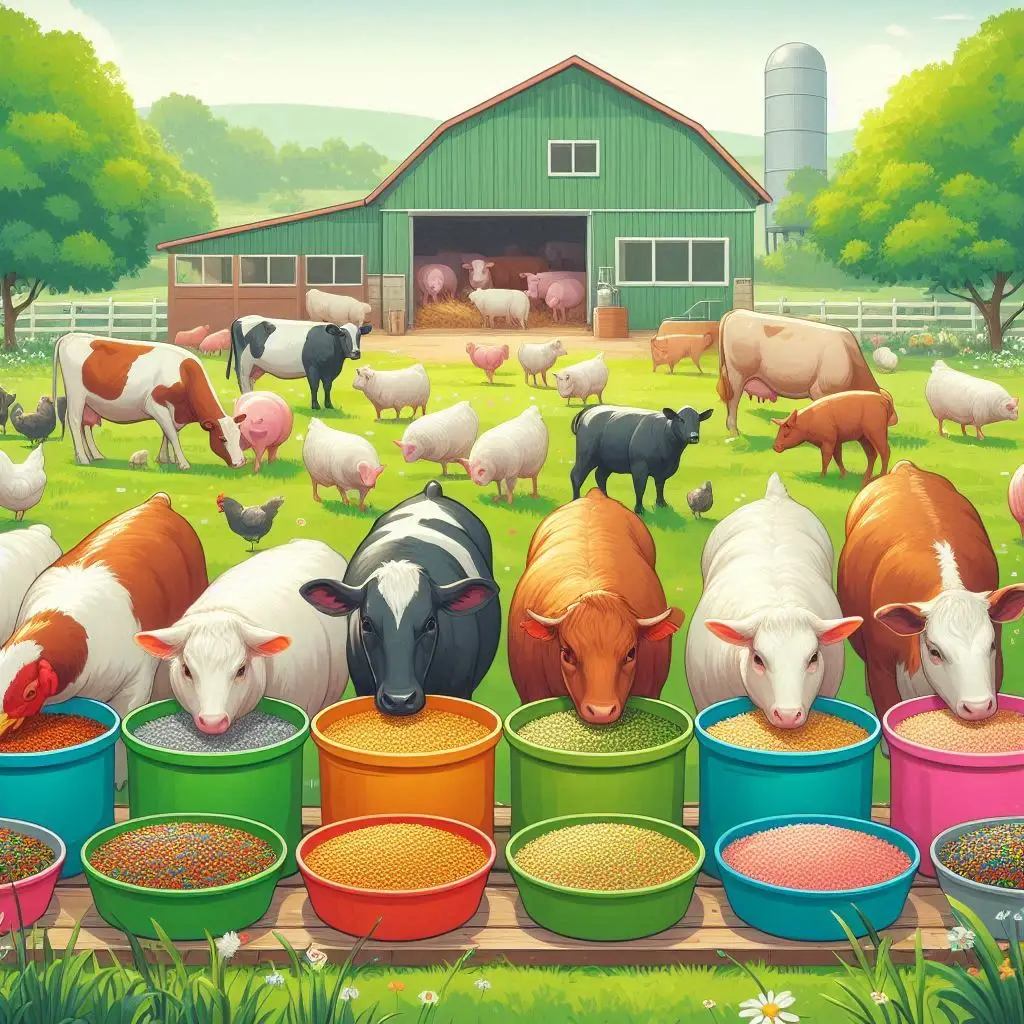Nutrition for Pregnant Ewes

Feeding Pregnant Ewes: A Comprehensive Guide
Pregnant ewes require specific nutritional management to ensure the health of both the ewe and her lambs. Proper feeding strategies can significantly impact lamb birth weights, colostrum quality, and overall flock performance. This article delves into the nutritional needs of pregnant ewes, focusing on late pregnancy, and provides practical feeding strategies for farmers.
Introduction
Feeding pregnant ewes is crucial for the successful rearing of lambs. Nutritional needs vary throughout gestation, especially during late pregnancy when fetal growth accelerates. Understanding these needs helps farmers optimize their feeding strategies.
Nutritional Requirements Throughout Pregnancy
Early Pregnancy (Weeks 1-15)
During early pregnancy, ewes have similar nutritional needs to maintenance levels. They should consume average-quality forage to maintain body condition. This stage is vital for embryonic survival.
Mid-Pregnancy (Weeks 16-30)
As pregnancy progresses, ewes require more nutrients. Ewe lambs need about 20% more feed than mature ewes to support their growth. A balanced diet with moderate-quality silage or hay and a small amount of concentrate feed is recommended.
Late Pregnancy (Last 6-8 Weeks)
This period accounts for 75% of fetal growth. Nutritional demands increase significantly:
- Energy: Ewes carrying twins may see their energy requirements double.
- Protein: A diet should include 17-18% crude protein.
- Daily Intake: Aim for 3.5 to 4.5 lbs of dry matter intake.
Key Nutritional Components
- Energy Sources
- Use high-energy feeds like cereals (barley, wheat, maize) to maximize energy intake.
- Avoid excessive cereal levels to prevent acidosis; balance with digestible fiber sources like molassed sugar beet pulp.
- Protein Sources
- High-quality protein sources such as soybean meal enhance milk output.
- Include bypass protein sources to improve lamb birth weights and immunity.
- Vitamins and Minerals
- Ensure adequate levels of calcium and magnesium to reduce risks of milk fever and grass tetany post-lambing.
- Regularly provide a mineral mix tailored to the ewe’s needs.
Feeding Strategies
Total Mixed Ration (TMR)
A TMR approach mixes forage and concentrates, providing a consistent diet throughout the day. This method minimizes large shifts in rumen pH associated with traditional feeding schedules.
Gradual Introduction of Concentrates
Introduce concentrates gradually to avoid digestive upsets. Start with low levels and increase based on the ewe’s condition and dietary needs.
Body Condition Score (BCS)
Maintaining an appropriate BCS is vital:
- Target a BCS of 3-3.5 at lambing.
- Ewes that are too thin (BCS <3) require preferential feeding.
Water Intake
Adequate water supply is essential; pregnant ewes may consume up to 6 liters per day on high dry matter diets. Ensure clean water access at all times.
Common Challenges in Feeding Pregnant Ewes
- Pregnancy Toxemia
- This condition arises from nutritional deficiencies during late pregnancy.
- Symptoms include lethargy, lack of appetite, and in severe cases, death.
- Prevent by ensuring adequate energy intake.
- Overfeeding Risks
- Overfeeding can lead to oversized lambs and difficult births.
- Focus on maintaining a balanced diet that supports fetal growth without excessive weight gain.
- Quality of Forage
- The quality of hay or silage directly impacts nutrient availability.
- Regularly analyze forage quality to adjust feeding strategies accordingly.
Management Factors During Late Pregnancy
- Regular Monitoring
- Regularly check the BCS of ewes to ensure they are fit for lambing.
- Adjust feeding based on individual ewe needs and litter size.
- Space Availability
- Ensure adequate trough space so all ewes can access feed without competition.
- This is particularly important when feeding ewe lambs alongside mature ewes.
- Environmental Considerations
- Pregnant ewes are sensitive to environmental changes; maintain a stable feeding environment.
- Stress can impact health and increase susceptibility to diseases.
Conclusion
Feeding pregnant ewes requires careful planning and management. By understanding their nutritional needs at different stages of pregnancy, farmers can ensure healthy lambs and maintain flock performance. Regular monitoring, quality forage analysis, and appropriate supplementation are essential components of a successful feeding strategy. By following these guidelines, farmers can optimize the health of their pregnant ewes and ensure robust lamb production, ultimately leading to a more productive flock overall.
For more pearls of Vets Wisdom:
https://wiseias.com/partitioning-of-food-energy-within-animals/





Responses